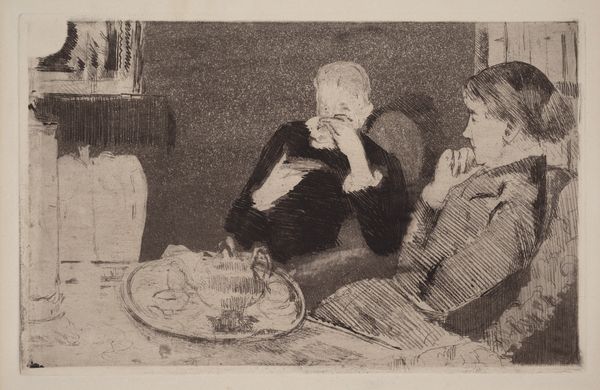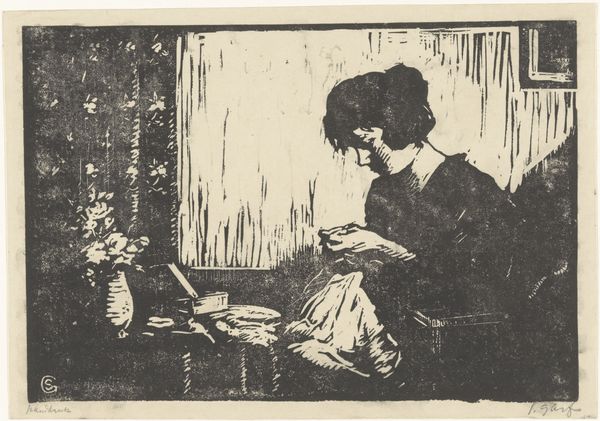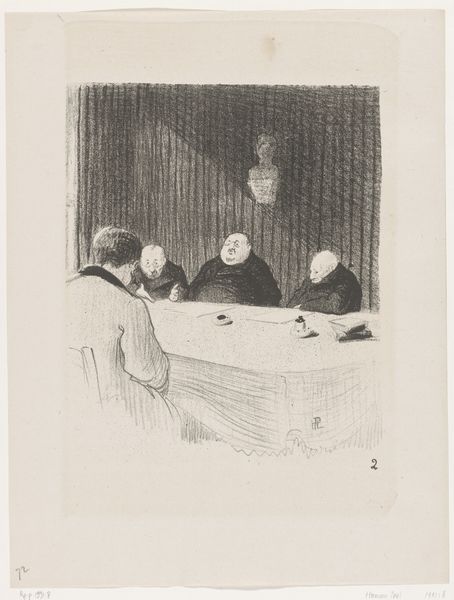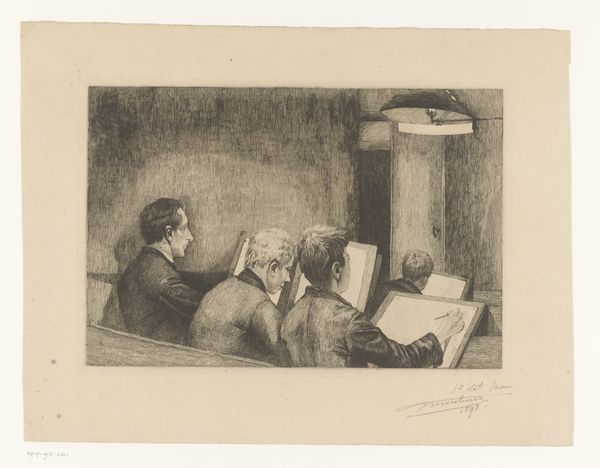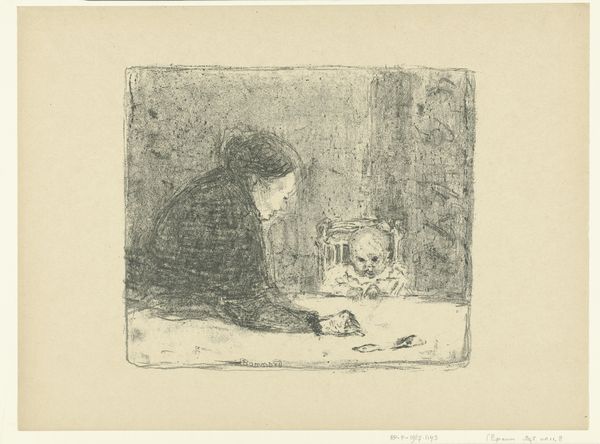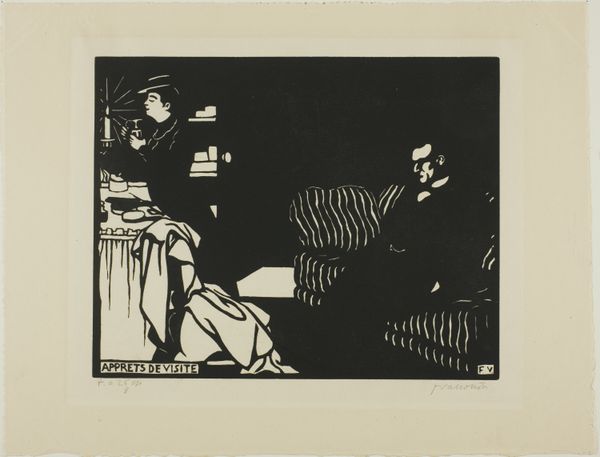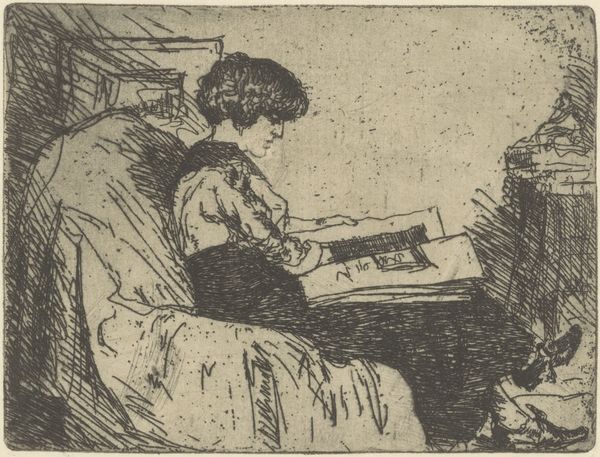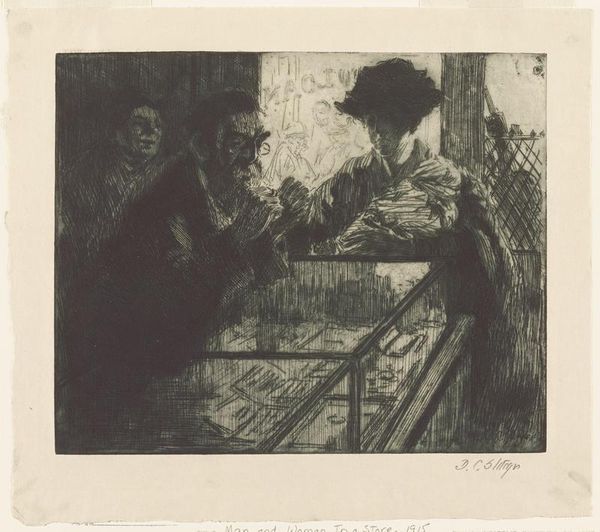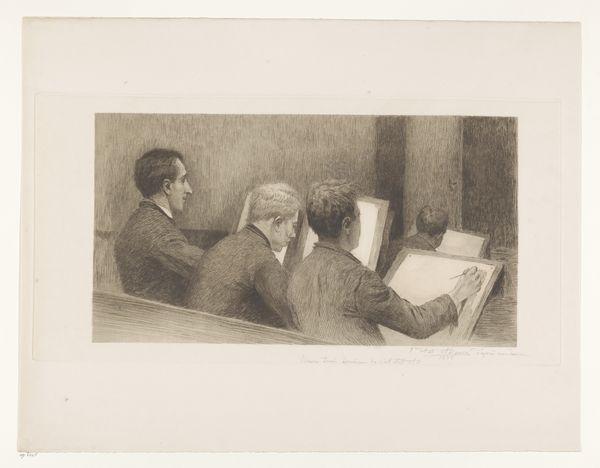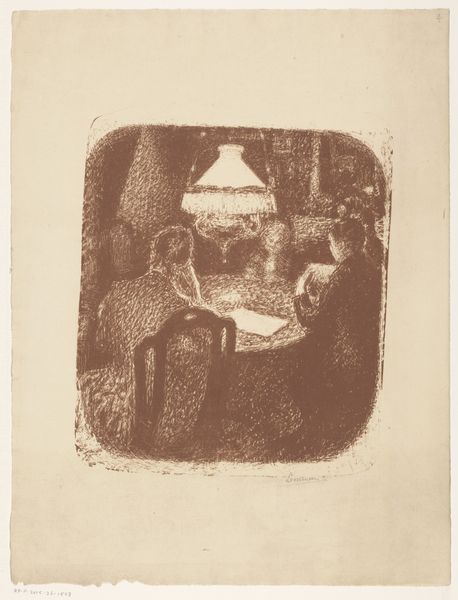
drawing, print, etching, paper
#
portrait
#
drawing
# print
#
impressionism
#
wedding photography
#
etching
#
paper
#
historical photography
#
19th century
#
united-states
#
genre-painting
Dimensions: 192 × 218 mm (image/plate); 237 × 321 mm (sheet)
Copyright: Public Domain
Curator: Looking at this etching from around 1882, “Under the Lamp,” by Mary Cassatt, currently held here at the Art Institute of Chicago, I’m struck by the intimacy of the domestic scene she's captured. Editor: My first impression is of quiet desperation. The monochromatic palette certainly contributes, but also the poses of the two women... a reader, a sewer. It's very somber, isn't it? Curator: Indeed. The stark lighting amplifies that feeling, almost as if the single bulb reveals more than it illuminates. Etching allowed Cassatt a kind of stark immediacy, the black ink really emphasizing the textures. It invites us to contemplate the rhythms of 19th-century women's labor and the societal pressures they were under. Editor: Right, and thinking about printmaking…etching, in particular, with its reliance on acid… it’s labor intensive! So much of what was expected of women – fine needlework, for instance – depended on this kind of almost invisible, yet constant, effort. I can’t help but wonder how Cassatt, from her position in a wealthy family, viewed that labor. Was she making a point about it? Curator: Absolutely, the choice of subject and the unflinching gaze are vital. And of course, her engagement with Impressionism at the time influenced her approach to domestic subject matter; ordinary people in ordinary, unguarded moments. Editor: I suppose Cassatt's privileged access and relative freedom, enabled through her family wealth, afforded her the opportunity to engage with and document these topics in the first place. As much as the subject of female labor interests me, I want to look into who could afford a Cassatt etching back then, what market did she cater to, and why? Curator: An important question! Looking at the world behind this artwork always enriches how we view what it means. Ultimately, Cassatt's decision to engage with subjects such as these demonstrates an emotional acuity, a sort of personal connection with these subjects that allows her to express them in her works. Editor: I'm more attuned now to this convergence of industrial print production with this particular portrait—labor reflected upon, produced through labor! Thank you for taking us through that. Curator: And for adding depth! I'm so happy for these different interpretations.
Comments
No comments
Be the first to comment and join the conversation on the ultimate creative platform.
